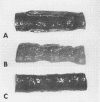Abstract
Small cylinders of red beet (Beta vulgaris) root were frozen at various rates. Ultraslow cooling at 0.2 C per hour to −4 C produced little damage, as determined by leakage of pigment and electrolytes, and softening. All of these increased at faster rates of cooling or at lower temperatures. Cooling at the ultraslow rate appears to induce extracellular freezing, resulting in a protective dehydration of the cell contents.
Full text
PDF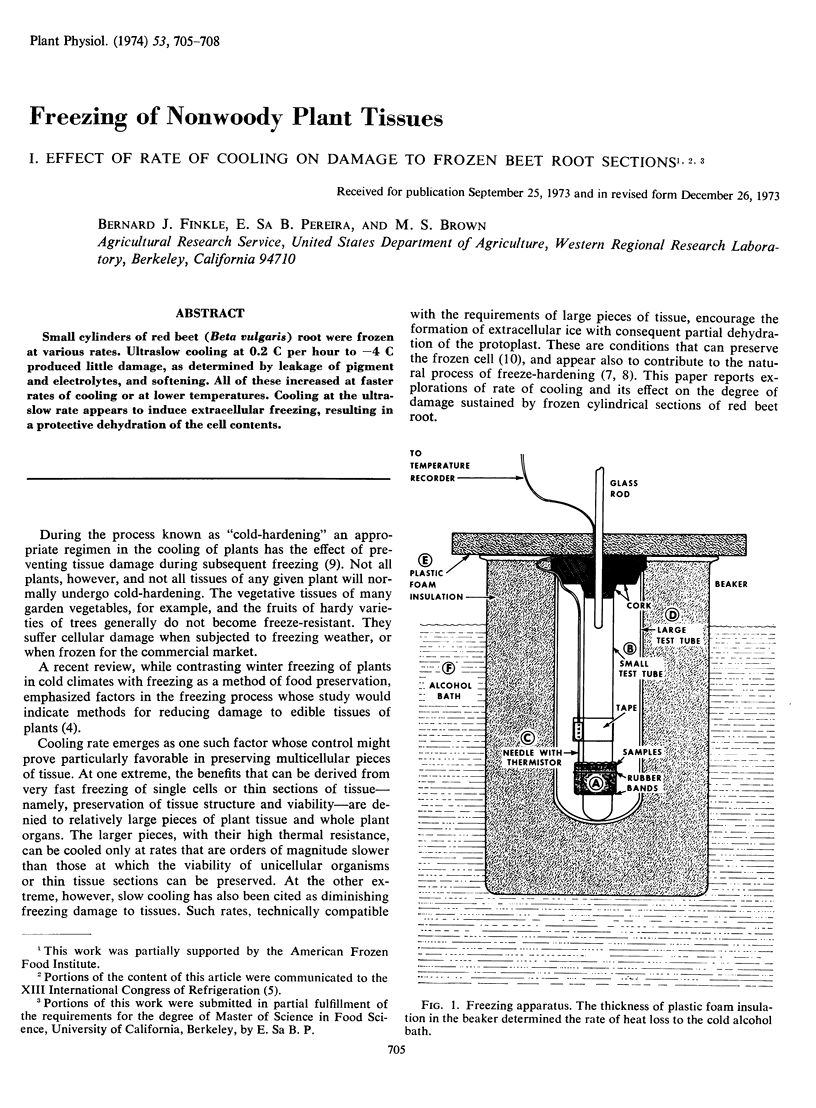
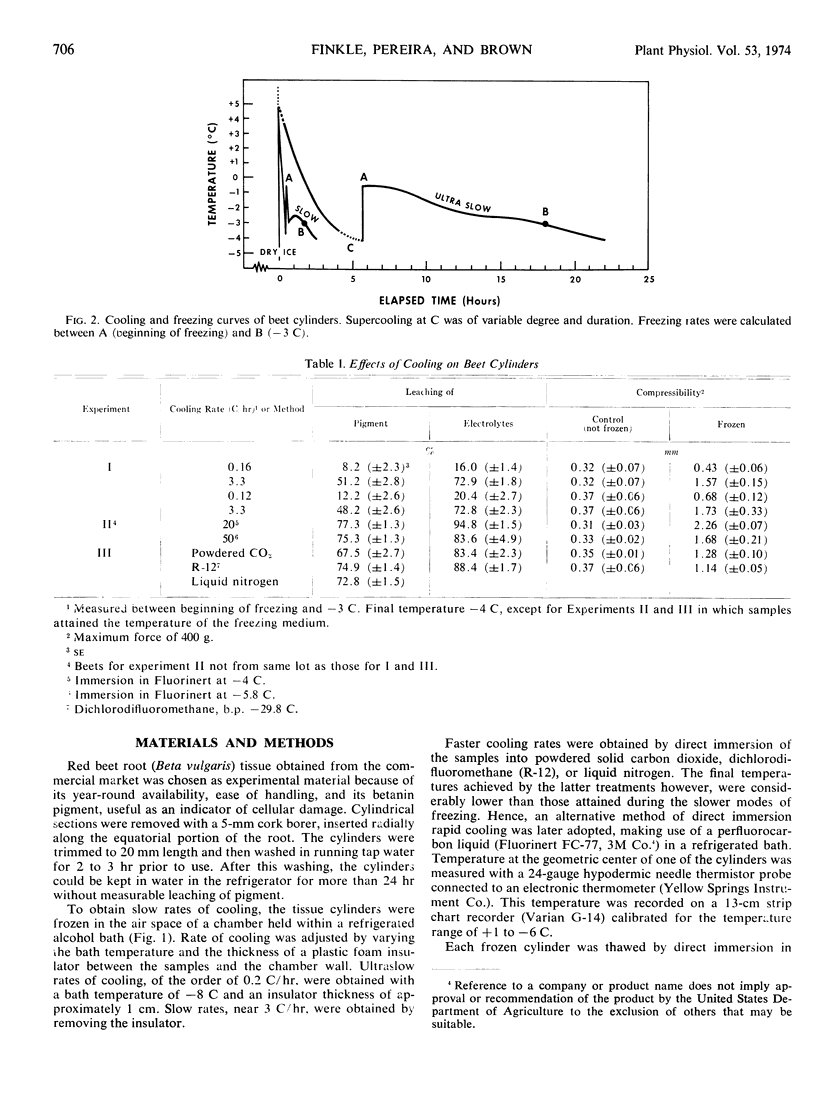
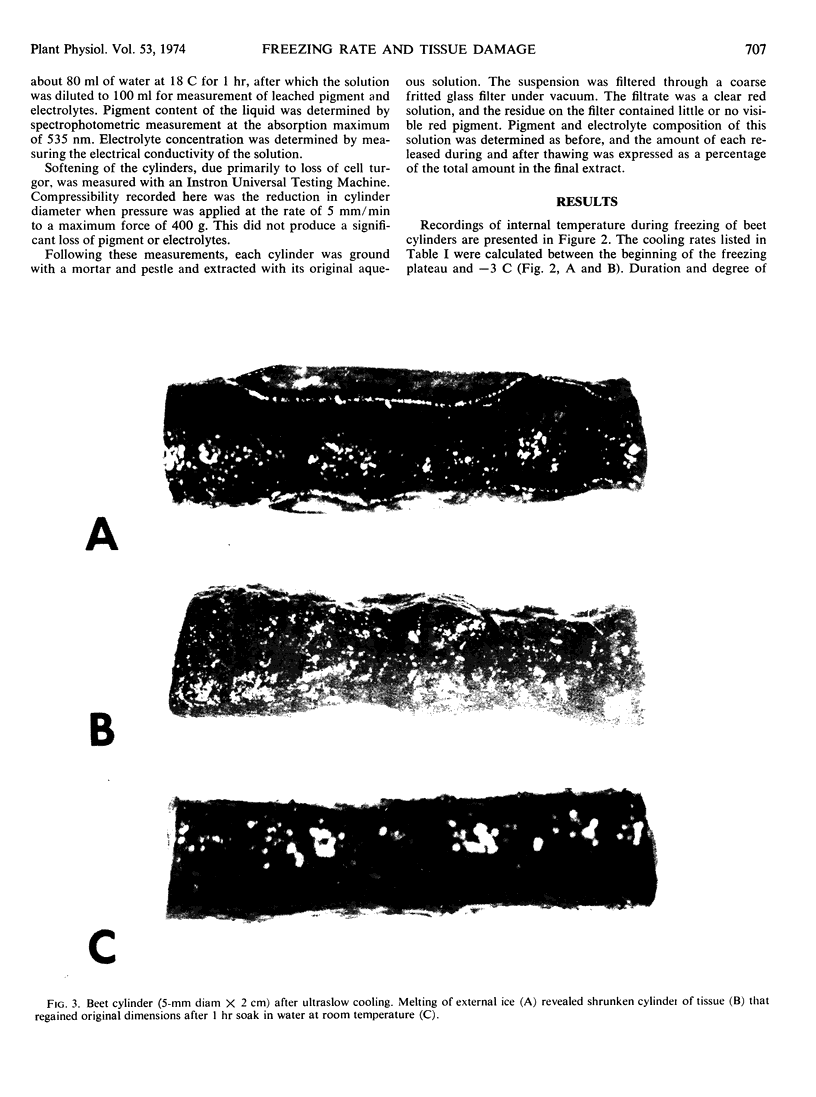
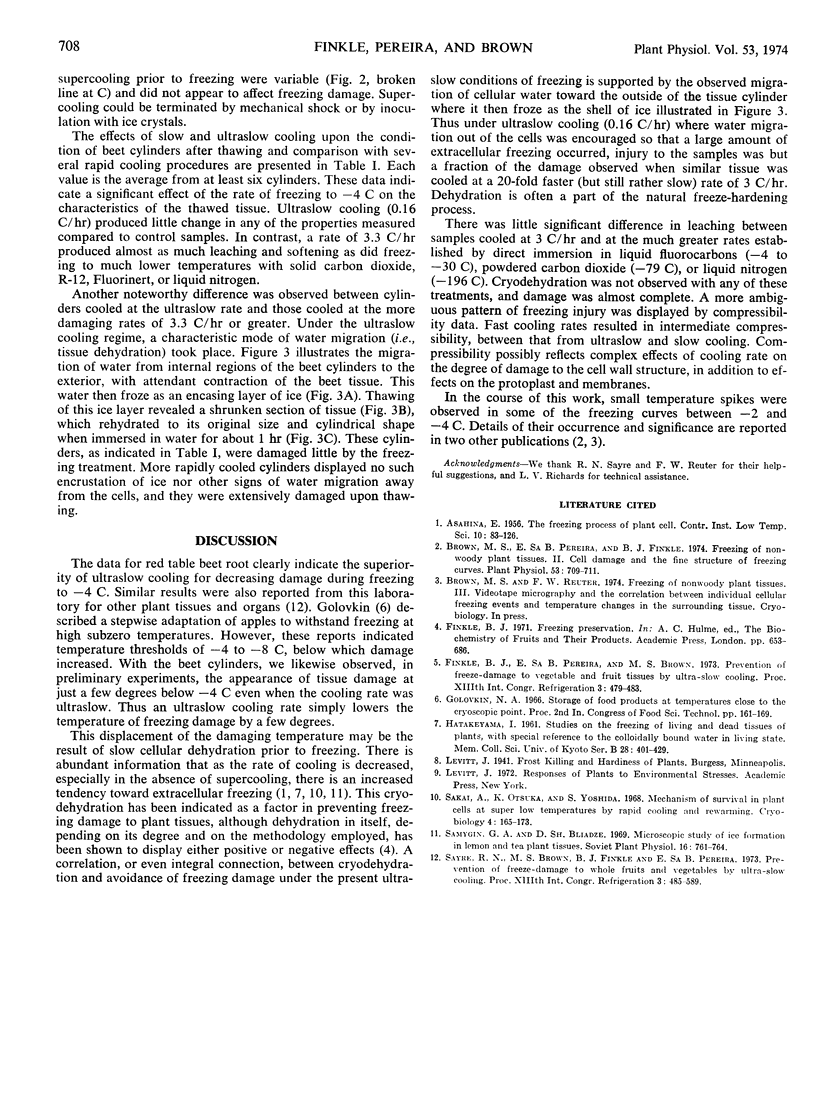
Images in this article
Selected References
These references are in PubMed. This may not be the complete list of references from this article.
- Brown M. S., Pereira E. S., Finkle B. J. Freezing of Nonwoody Plant Tissue: II. Cell Damage and the Fine Structure of Freezing Curves. Plant Physiol. 1974 May;53(5):709–711. doi: 10.1104/pp.53.5.709. [DOI] [PMC free article] [PubMed] [Google Scholar]
- Sakai A., Otsuka K., Yoshida S. Mechanism of survival in plant cells at super-low temperatures by rapid cooling and rewarming. Cryobiology. 1968 Jan-Feb;4(4):165–173. doi: 10.1016/s0011-2240(68)80110-5. [DOI] [PubMed] [Google Scholar]



